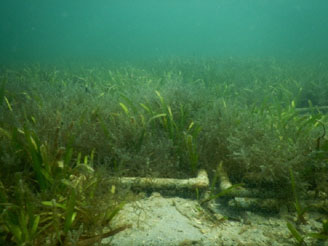Gulf of Mannar Marine Biosphere Reserve
Gulf of Mannar Marine Biosphere Reserve
Designated as a Biosphere Reserve, the Gulf of Mannar is one of the biologically richest coastal regions in all of mainland of India. It is the first Marine Biosphere Reserve in the South and South East Asia.
In India, the Gulf of Mannar region in Tamil Nadu is one of the four major coral reef areas and the others are Gulf of Kutch in Gujarat, Lakhsadweep and Andaman and Nicobar islands.
Location
 The Gulf of Mannar, running down south from Rameswaram to Kanyakumari in Tamil Nadu, India is situated between Longitudes 78008 E to 79030 E and along Latitudes from 8035 N to 9025 N.
The Gulf of Mannar, running down south from Rameswaram to Kanyakumari in Tamil Nadu, India is situated between Longitudes 78008 E to 79030 E and along Latitudes from 8035 N to 9025 N.
This Marine Biosphere Reserve encompasses a chain of 21 islands (2 islands already submerged) and adjoining coral reefs off the coasts of the Ramanathapuram and the Tuticorin districts forming the core zone; the Marine National Park and the buffer zone includes the surrounding seascape and a 10 km strip of the coastal landscape covering a total area of 10,500 Km2 , in the Ramanathapuram, Tuticorin, Tirunelveli and Kanyakumari Districts with a long coastline of 364.9 Km.
Biodiversity
Besides key coastal habitats like coral reefs, seagrass beds and mangroves, the Gulf of Mannar Biosphere Reserve supports several globally important species such as the critically endangered Dugong dugon (sea cow), all protected sharks (IWPA, 1972) including whale shark, sea horses, green and hawksbill sea turtles, dolphins and sea cucumbers and several endemic species of Balanoglossus, sea grass, crabs and mangroves.
The swamp near the Kodandaraman Temple near Rameswaram gives shelter to a flock of about 10,000 flamingos every year, during the months of December to March along with various many other species of waders and wetland birds.
Recognitions
The Gulf of Mannar has drawn attention of conservationists even before the initiation of the Man and Biosphere (MAB) program by the UNESCO in 1971. With its rich biodiversity of about 4223 species of various flora and fauna, part of this Gulf of Mannar between Rameswaram and Tuticoirin covering 21 islands and the surrounding shallow coastal waters has been declared as a Marine National Park in 1986 by the Government of Tamil Nadu and later the first Marine Biosphere Reserve of India in 1989 by the Government of India.
Major threats
The primary threats to the globally significant biodiversity of the Reserve are, in order of importance: Habitat destruction; over-harvesting of marine resources; and potential localized landbased marine pollution from a low number of civic point-sources.
Habitat destruction (coral reefs, seagrass, and mangroves) is the most serious threat to the long-term viability of the Park’s globally significant resources. Coral mining, though it is illegal, has stopped from 2005. Seagrass beds are damaged by inappropriate bottom trawling practices. Localized pollution outside of the southern tip of the buffer zone represents a potential threat to the Reserve’s biological diversity. Development under way in the southern part of the Tuticorin districts is of concern to the long-term management of the reserve.
Gulf of Mannar Biosphere Reserve Trust
The GOMBRT was established by the Government of Tamil Nadu in G.O.Ms.No.263/E&F FR (V) Dated: 18.12.2000. The trust is registered under Tamil Nadu Society Registration Act 1975. The Trust has been established as a special purpose vehicle to coordinate project implementation in order to ensure effective inter-sector coordination and facilitate main streaming of biodiversity conservation issues into the productive sector and policy development
Related resources
Last Modified : 7/26/2024
Considering the need to have a conservation paradi...
This topic describes about the various biosphere r...
Provides information about State of India’s Birds ...
This topic provides information about Scheme for C...
